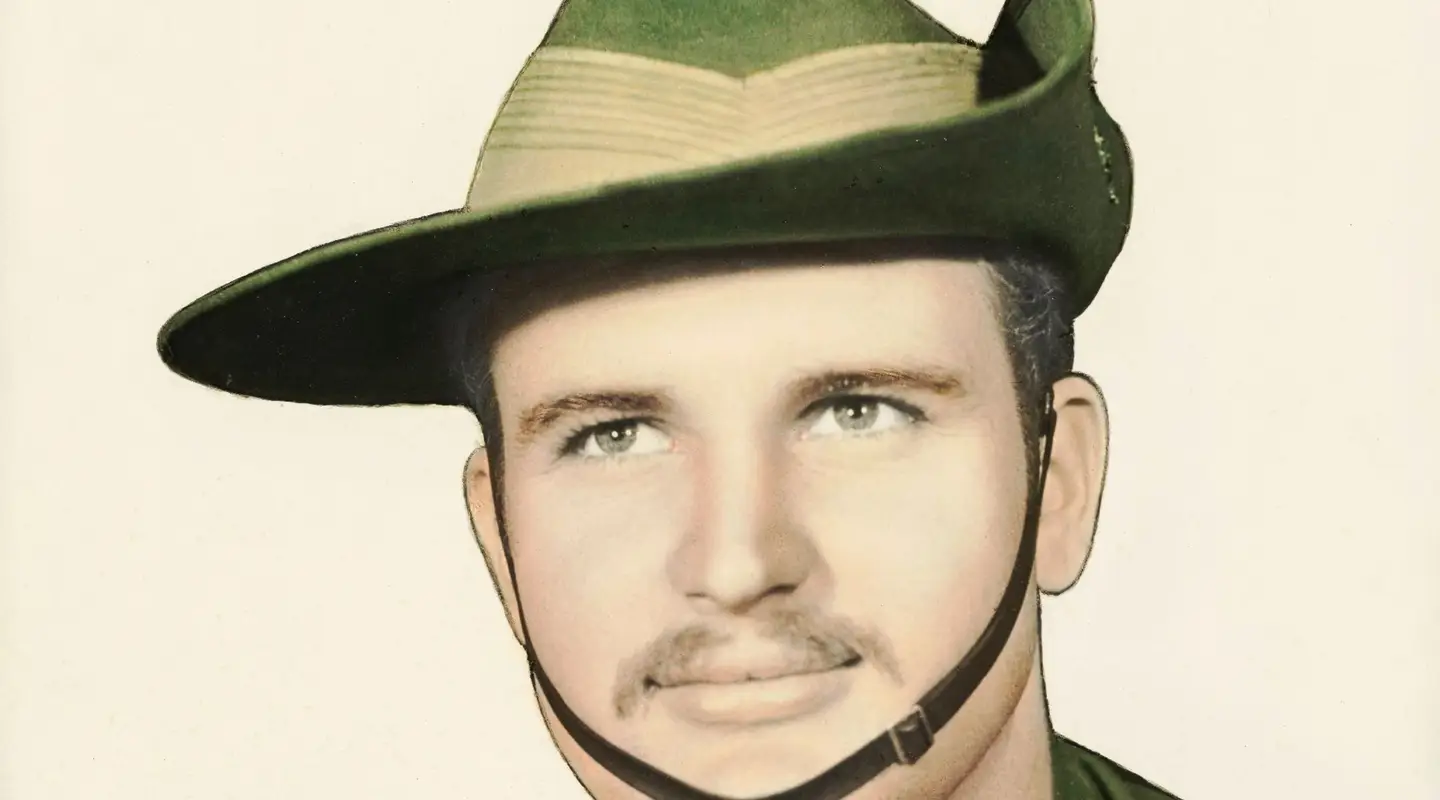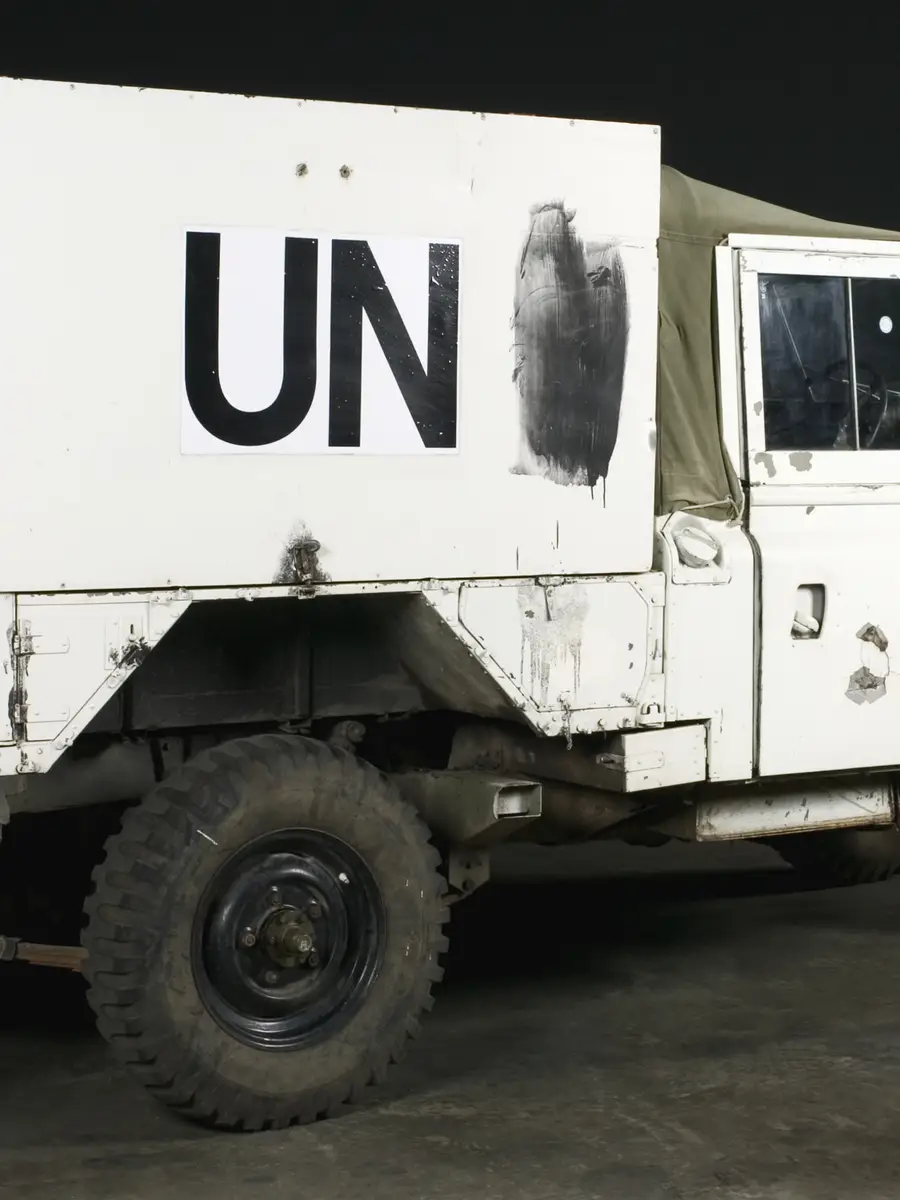On 12 November 1974, Australian peacekeeper Ian Ward was killed when a Land Rover hit a mine in Cyprus. Fifty years on, the recovered vehicle was unveiled at the Memorial and will feature in the new Australian Peacekeeping: 1947 to Today gallery.
On 12 November 1974, two Australian peacekeepers in Cyprus were escorting a local family through the buffer zone between the north and south communities of the island, when it struck a land mine.
Australian peacekeeper Sergeant Ian Ward was killed, as was one of the passengers. The other Australian peacekeeper, Senior Sergeant John Woolcott, was seriously wounded but survived, as did children travelling in the vehicle.
Ian Ward had only been in Cyprus five days when the incident occurred. He was 25 years old.
Wreckage of the vehicle was stranded in the buffer zone until 2016 when it was removed from the cleared mine site and transferred to the UN Protected Area.
On the 50th anniversary of the incident, 12 November 2024, the Land Rover was unveiled at the Memorial for Ian’s two sisters, Barbara and Rosemary, and members of the NSW Police.
The Land Rover will be displayed in the new Australian Peacekeeping: 1947 to Today gallery which will open in 2026, alongside new galleries on the Middle East, Afghanistan, Iraq and Syria.
"He was someone that wanted to help people. He was in the Police force at 19 and he was happy to go to Vietnam; he just wanted to help."
"He wasn’t supposed to be on that mission, he asked to go. He talked them into swapping with the person who was scheduled to go.
They were returning a Turkish family who were trapped on the Greek side, returning them to the Turkish-Cypriot side, so they had to drive through the buffer zone.
Unfortunately, there was an unmarked landmine. The left side of the vehicle hit the landmine and Ian was the passenger."
"So, we’re here today for the unveiling of the Ian Ward vehicle, which is an incredibly significant new collection acquisition for the Peacekeeping Gallery, and we have acquired this vehicle as the centrepiece of the gallery.
It’s intended to be the first object that visitors see when they walk in.
We wanted to enhance the public’s understanding of Australian peacekeeping operations and so having this destroyed vehicle and this heartbreaking incident as part of the gallery helps the Australian public understand that peacekeepers put their lives on the line on a daily basis in distant faraway places, to help people that often they’ve never met."
"To be here today to see this Land Rover here – I’ve seen photos of it – and those photos never gave anywhere near the perception as to what seeing the Land Rover here today is. And the fact that anyone survived it was absolutely extraordinary.
Police today don’t even know about how involved we are in the United Nations; policing just goes beyond not only NSW but also internationally.
Tragically we lost one of our best officers on that day and it also shouldn’t be forgotten that John Woolcott, his colleague, he was seriously injured. He was able to make a full recovery, and he retired from the NSW Police Force in 2001 as a Duty Officer in north Sydney."
"It will be on display for years to come. So, people can understand the bravery of the UN peacekeepers.
His memory will live on."

